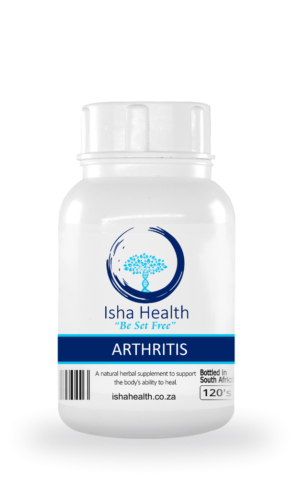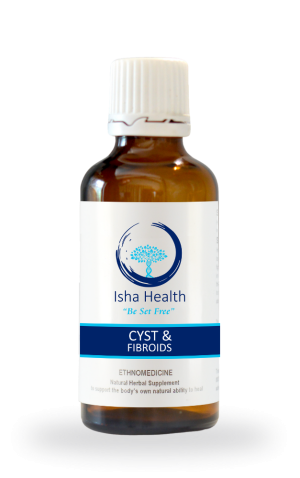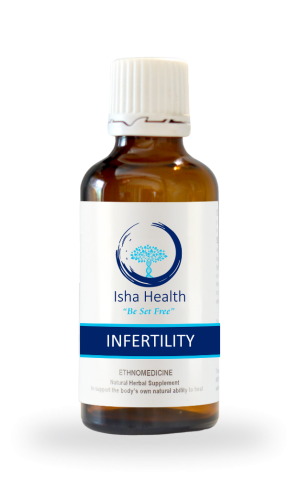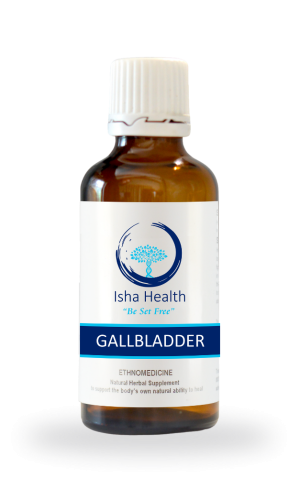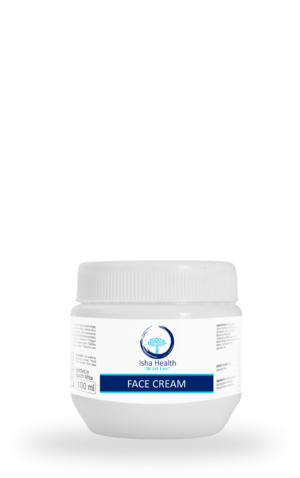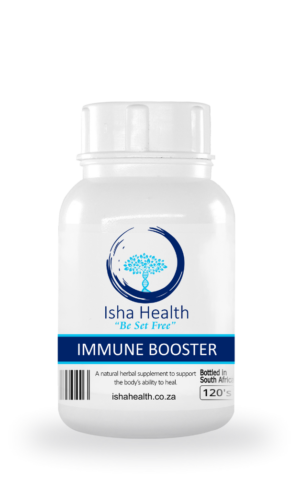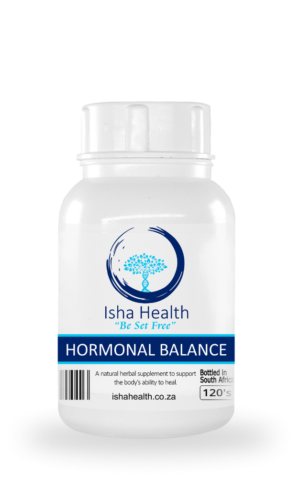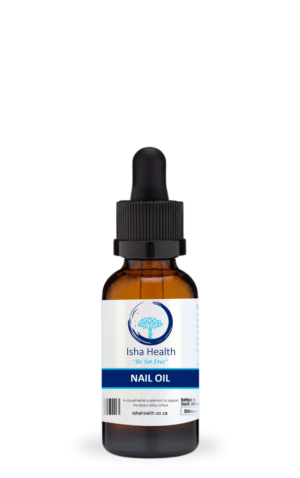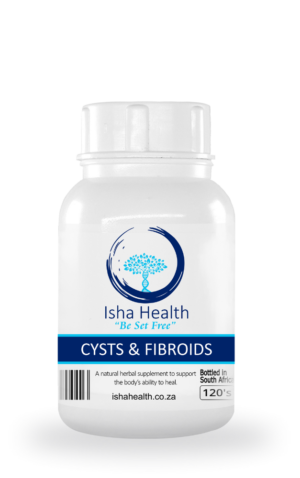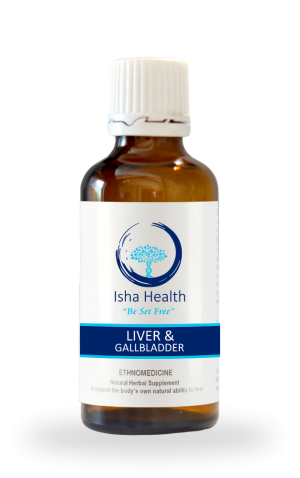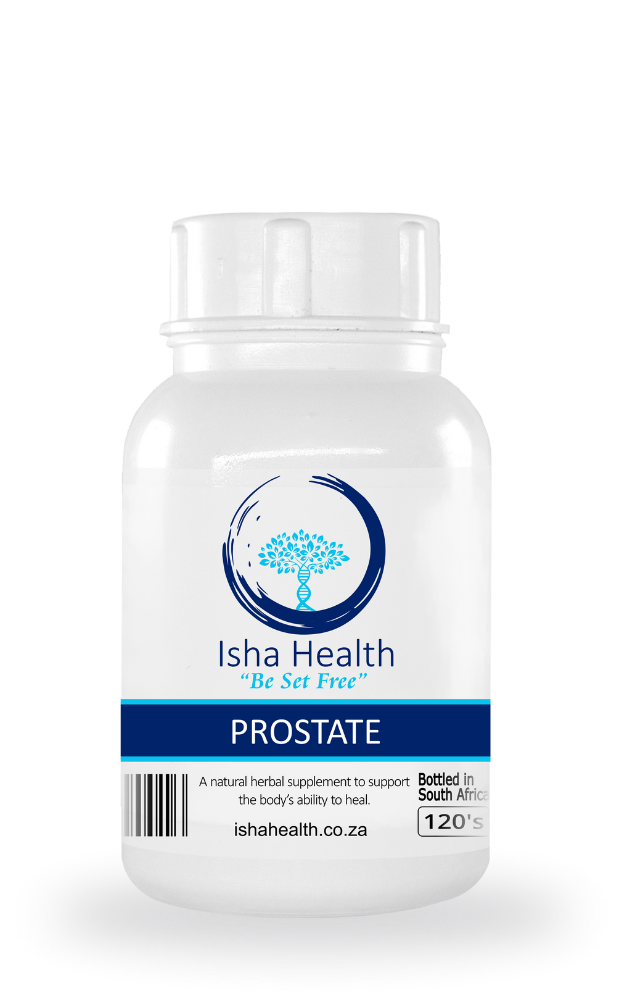
Prostate
- 3-5 working days
- Hand-Made
- Manufactured in South Africa
- 100% Natural
- 100% Herbal products
- 100% Manufacturing Guarantee
Description
Directions for Use
Ingredients
Warning
Technical Information
Our Herbal Prostate Supplement is expertly formulated to provide comprehensive nourishment for the prostate and urinary tract, addressing concerns such as inflammation, enlargement, and urinary frequency.
Carefully selected ingredients boast antibacterial, anti-inflammatory, and anti-tumour properties, working synergistically to promote prostate health and prevent potential issues. Trust in the power of natural elements to support your prostate and urinary system.
2-4 x capsules 3x daily
20 minutes before meals.
No usually used by children
Alpha Lipoic Acid
Ashwaganda
Boswelia
Burdock Root
Dandelion Root
Ginseng
Graviola
Magnesium
Pomegranate
Pygeum
Reishi mushroom
Saw Palmetto
Selenium
Stinging nettle
Sutherlandia
Vit A, B3, B12, C, D, E, Zinc
Walnut black
Wild Dagga
Other African Herbs
African Potato: Supports hormonal balance related to prostate function and may help with issues like an enlarged prostate and potential prostate cancer concerns.
Alpha-Lipoic-Acid: Acts as a powerful antioxidant, helping maintain a healthy environment in the prostate and supporting overall well-being.
Ashwagandha: Known for its stress-relieving properties, it may contribute to a healthier balance in the prostate, especially in stressful situations that can impact prostate health.
Boswelia: Works to calm inflammation in the prostate and supports its health, particularly in conditions like benign prostate hyperplasia (BPH) and prostate cancer.
Buchu: Traditionally associated with urinary health, it may assist in maintaining a healthy urinary flow related to prostate issues.
Burdock Root: Offers potential benefits in controlling tumour growth, particularly in conditions related to obesity that may affect the prostate.
Dandelion Root: Selectively targets unhealthy cells, potentially supporting prostate health without harming normal cells.
Ginseng: May help manage prostate weight, contributing to overall prostate health and well-being.
Graviola: Contains compounds with potential antitumor properties, offering support in managing prostate cancer concerns.
Pygeum: With antioxidant and anti-inflammatory effects, it supports a healthy urogenital system, benefiting the prostate.
Pomegranate: Rich in ellagic acid, it may contribute to the natural death of prostate cancer cells without harming healthy ones.
Reishi Mushrooms: Known for their anti-inflammatory effects, they may offer support in managing inflammatory conditions, including those affecting the prostate.
Resveratrol: Supports prostate health by inhibiting the invasiveness of cancer cells and reducing the risk of conditions like benign prostatic hyperplasia (BPH).
Saw Palmetto: Helps regulate hormone receptors, reducing inflammation and potentially easing symptoms related to prostate issues.
Selenium: Supports the prevention of prostate cancer by influencing the growth rates of cancer cells.
Sutherlandia: Shows promise in preventing prostate cancer, supporting overall prostate health.
Vitamin A: Essential for immune support and maintaining a healthy prostate.
Vitamin B3 (Niacin): Supports prostate health with potential anti-inflammatory effects.
Vitamin B12: Essential for DNA synthesis and repair, contributing to overall prostate cell maintenance.
Vitamin C: Known for its antioxidant properties, it may help prevent oxidative stress-related damage to the prostate.
Vitamin D3 (cholecalciferol): Crucial for immune support and regulating cellular processes in the prostate.
Vitamin E: Acts as a powerful antioxidant, protecting prostate cells from oxidative stress.
Zinc: Vital for maintaining hormonal balance and supporting the immune system in the prostate.
Not suitable for pregnant or breastfeeding women.
Protect from sunlight.
Store below 25°c.
The prostate is a small, walnut-shaped gland located just below the bladder in men. It wraps around the urethra, the tube that carries urine and semen out of the body. The size of the prostate varies with age, typically being about the size of a walnut in younger men. However, it can enlarge with age, leading to conditions like benign prostatic hyperplasia (BPH).
Anatomy and Appearance:
- Location: Situated beneath the bladder and in front of the rectum, the prostate’s strategic position allows it to influence both urinary and reproductive functions.
- Shape: The prostate has a distinctive, roughly conical or heart-shaped appearance, with its base facing upward toward the bladder and the apex pointing downward.
Functionality:
- Seminal Fluid Production: One of the primary functions is to produce a significant portion of seminal fluid. This fluid nourishes and supports sperm during ejaculation.
- Muscular Contractions: During ejaculation, the prostate’s smooth muscles contract, helping propel semen into the urethra and eventually out of the body.
- Enzyme Secretion: The prostate secretes enzymes, including prostate-specific antigen (PSA). PSA aids in the liquefaction of semen after ejaculation, promoting sperm mobility.
Hormonal Influence:
- Testosterone Dependence: The growth and maintenance of the prostate are highly dependent on testosterone, the main male sex hormone. Testosterone is produced by the testes in response to signals from the pituitary gland.
- Luteinizing Hormone (LH): The pituitary gland releases LH, stimulating the testes to produce testosterone. This hormonal interplay is crucial for the prostate’s development and ongoing function.
Understanding the anatomy, appearance, and functions of the prostate provides valuable insights into its role in male reproductive and urinary health. Regular health checkups and awareness of changes in the prostate’s size or function are essential for maintaining overall well-being, especially as men age.
Understanding Prostate Problems:
- Benign Prostatic Hyperplasia (BPH): BPH involves the non-cancerous enlargement of the prostate gland, common as men age. Symptoms include frequent urination, difficulty starting or stopping urine flow, weak stream, and a persistent feeling of incomplete emptying. Hormonal changes, primarily an increase in dihydrotestosterone (DHT), contribute to prostate enlargement.
- Prostatitis: Prostatitis is the inflammation of the prostate gland and can be acute or chronic. Symptoms include pelvic pain, painful urination, discomfort in the genital area, and flu-like symptoms. Causes may include bacterial infection, immune system response, or pelvic muscle tension.
- Prostate Cancer: Prostate cancer is the abnormal growth of cells in the prostate, potentially forming tumours. Early stages may be asymptomatic. Later symptoms include difficulty urinating, blood in urine or semen, and pain in the pelvis or back. Risk factors include age, family history, race (more common in African-American men), and genetic factors.
- Prostate Calcification: Calcification involves the accumulation of calcium deposits in the prostate tissue. Often asymptomatic, it can contribute to urinary issues or discomfort. Causes may include age-related changes, inflammation, or prior infections.
- Ejaculatory Duct Obstruction: This condition involves the obstruction of the ducts that carry semen from the prostate to the urethra. Symptoms include pain during ejaculation, blood in semen, or fertility issues. Causes may include structural issues, infections, or inflammation.
- Prostate Cysts: Fluid-filled sacs may develop in the prostate, forming cysts. Often asymptomatic, larger cysts can cause pain or affect urinary function. Causes may include obstructed ducts, infections, or fluid accumulation.
- Enlarged Prostate (General Term): Enlargement, whether due to BPH, inflammation, or other factors, can lead to various symptoms. Similar to BPH symptoms, including urinary issues and discomfort.
Clinical Evaluation and Treatment: Individuals experiencing prostate-related symptoms should seek medical evaluation. Diagnosis often involves a combination of digital rectal exams, PSA tests, imaging, and, if necessary, biopsies. Treatment options vary based on the specific condition and its severity, ranging from lifestyle modifications and medications to surgical interventions in more severe cases. Regular screenings and discussions with healthcare providers are essential for maintaining prostate health and addressing potential issues early.
Benign Prostatic Hyperplasia (BPH)
Benign Prostatic Hyperplasia (BPH), also known as prostate gland enlargement, is a common condition in aging men. It involves the non-cancerous growth of the prostate, leading to an increase in size. As the prostate enlarges, it can squeeze the urethra, causing urinary symptoms.
Overview of BPH:
- Non-Cancerous Growth: BPH is characterized by the non-malignant proliferation of prostate cells, resulting in an enlarged gland.
- Age-Related: While not all men experience significant prostate enlargement, the likelihood of developing BPH increases with age.
Measuring BPH:
- Prostate-Specific Antigen (PSA) Test: PSA is a protein produced by the prostate. Elevated PSA levels can indicate various prostate conditions, including BPH. However, an elevated PSA level alone does not provide a definitive diagnosis of BPH.
- Digital Rectal Exam (DRE): During a DRE, a healthcare provider manually examines the prostate by inserting a gloved, lubricated finger into the rectum to feel for abnormalities in size, shape, or texture.
Norms for Different Ages:
- Normal Prostate Size: The size of the prostate can vary among individuals, and norms for prostate size are not strictly defined.
- Age-Related Changes: Prostate size tends to increase with age due to hormonal changes, particularly the influence of testosterone.
- Symptom Assessment: The severity of BPH symptoms, such as increased frequency of urination, difficulty initiating or maintaining a urine stream, and a sense of incomplete bladder emptying, is often used to evaluate the impact of prostate enlargement.
It’s important to note that while BPH is common in aging men, not everyone with an enlarged prostate experiences bothersome symptoms. Regular checkups, including PSA tests and DREs, help monitor prostate health and assess the need for further evaluation or intervention. Men should discuss any urinary symptoms or concerns with their healthcare providers for appropriate management and guidance.
Understanding PSA Blood Test Results:
Prostate-Specific Antigen (PSA) is a vital marker assessed through blood tests to gauge prostate health. PSA levels can vary with age, and understanding these nuances is crucial for accurate interpretation.
Normal PSA Ranges:
- For men under 50, a PSA level of 0 to 2.5 ng/mL is generally considered normal.
- Men between 50 and 70 may have slightly higher normal ranges, up to 4.0 ng/mL.
- PSA levels tend to rise naturally with age, and men over 70 may have normal levels up to 6.5 ng/mL.
Age-Related Considerations:
- Younger individuals typically have lower baseline PSA levels, and any significant elevation may warrant attention.
- Older men commonly exhibit higher PSA levels due to age-related prostate changes. A steady increase is expected but should be monitored for rapid spikes.
Interpreting Elevated PSA: An elevated PSA level doesn’t automatically signal prostate cancer. Various factors, such as benign prostatic hyperplasia (BPH), prostatitis, or recent vigorous activity, can cause temporary increases. Monitoring trends and considering the rate of change (PSA velocity) provides a more comprehensive picture.
Indicators of Prostate Problems:
- PSA Velocity: A rapid increase in PSA levels over time may suggest issues and requires closer evaluation.
- PSA Density: This considers PSA levels in relation to prostate size. A higher density can indicate potential problems.
- Free PSA: Assessing the proportion of free PSA to total PSA aids in distinguishing between benign conditions and potential cancer.
Clinical Implications: While an elevated PSA can trigger concern, it’s essential to assess individual health factors. A healthcare provider considers age, risk factors, and personal health history for a nuanced interpretation. Diagnostic steps, such as imaging or biopsy, may be recommended to rule out prostate cancer.
Baseline PSA Levels: Establishing an individual’s baseline PSA level provides a reference point for tracking changes. This approach, combined with a holistic understanding of prostate health, enables more accurate assessments.
In summary, understanding PSA levels involves recognizing age-related norms, interpreting trends, and considering various factors influencing prostate health. Collaborating with healthcare providers ensures informed assessments and appropriate actions tailored to individual health contexts.
Understanding Prostate Cancer:
- Overview: Prostate cancer occurs when abnormal cells in the prostate gland grow uncontrollably, forming tumours. It is one of the most common cancers in men, typically progressing slowly and often remaining localized. Early detection and appropriate management are crucial for effective treatment.
- Symptoms: In the early stages, prostate cancer may be asymptomatic. As it progresses, symptoms may include difficulty urinating, blood in urine or semen, pain or discomfort in the pelvis, and erectile dysfunction. However, these symptoms can also be indicative of non-cancerous conditions.
- Dangers: Prostate cancer can become dangerous if it spreads beyond the prostate, a process known as metastasis. Advanced stages may affect nearby tissues, bones, or other organs, leading to severe complications. If left untreated, it can be life-threatening.
- Causes and Risk Factors: The exact cause of prostate cancer is unknown, but several risk factors increase its likelihood. Age (more common in older men), family history, ethnicity (African-American men are at higher risk), and genetic factors play roles. Hormonal changes, especially an increase in dihydrotestosterone (DHT), contribute to cancer development.
- Prognosis: The prognosis for prostate cancer depends on various factors, including the cancer’s stage, grade, and how quickly it is growing. Early detection, often through PSA testing and regular check-ups, significantly improves prognosis. Treatment success rates are high, especially for localized cases.
Treatment Options:
- Active Surveillance: Monitoring slow-growing tumors without immediate treatment.
- Surgery: Removal of the prostate gland (prostatectomy).
- Radiation Therapy: Using high-dose radiation to kill cancer cells.
- Hormone Therapy: Lowering levels of hormones, such as testosterone, to slow cancer growth.
- Chemotherapy: Medications to kill rapidly dividing cells, including cancer cells.
- Immunotherapy: Boosting the body’s immune system to target cancer cells.
Preventive Measures: While not foolproof, lifestyle choices may reduce the risk of prostate cancer. These include maintaining a healthy diet rich in fruits and vegetables, regular exercise, and avoiding excessive red meat consumption. Early detection through regular screenings, particularly PSA tests, is vital for timely intervention.
Conclusion: Prostate cancer is a complex disease with varied outcomes. Timely detection, advances in treatment options, and ongoing research contribute to better outcomes for individuals diagnosed with this cancer. Open communication with healthcare providers, understanding risk factors, and proactive health management are essential elements in addressing prostate cancer.
How do you know you have Prostate Cancer?
- Prostate Cancer Awareness: Being aware of potential signs is crucial for identifying prostate cancer early. Look out for symptoms like difficulty urinating, frequent urges to urinate, blood in urine or semen, pelvic pain, or changes in sexual function.
- Seek Medical Attention: If you notice any of these symptoms, it’s important to consult with a healthcare professional. They can conduct screenings, including a Prostate-Specific Antigen (PSA) blood test and a Digital Rectal Exam (DRE), to assess your prostate health.
- Regular Check-ups: Regular check-ups and open communication with your doctor are essential for maintaining prostate health. Timely detection can significantly improve outcomes, so don’t hesitate to discuss any concerns or changes in your health.
- Preventive Measures: Prioritize preventive measures such as maintaining a healthy lifestyle, including a balanced diet and regular exercise. Being proactive about your well-being can contribute to overall health, reducing the risk of prostate cancer.
Ingredients which are traditionally used for this disorder
Technical info:
African Potato: Contains natural plant progesterone, influencing hormonal balance related to prostate function. It shows potential in addressing benign prostate hyperplasia (BPH), characterized by non-cancerous enlargement of the prostate gland, and may have implications for prostate cancer management.
Alpha-Lipoic-Acid: This potent antioxidant influences the redox status in the prostate gland, modulating oxidative stress. The redox balance plays a crucial role in cellular functions and signaling pathways related to prostate health.
Ashwagandha: Known for its adaptogenic properties, Ashwagandha may modulate stress-related pathways that impact prostate health. Chronic stress can influence hormonal balance, potentially contributing to prostate issues.
Boswelia: A powerful 5-lipoxygenase inhibitor, Boswelia influences inflammatory pathways associated with prostate conditions. It modulates gene expression, affecting the production of pro-inflammatory cytokines linked to benign prostatic hyperplasia (BPH) and prostate cancer.
Buchu: This herb is traditionally associated with genitourinary health, including the prostate. It may have tonifying effects on the urinary system, potentially influencing weak urine flow related to prostate issues.
Burdock Root: Arctigenin in Burdock Root has been studied for its effects on tumour growth, including in obese conditions. Prostate health, particularly in the context of obesity-related factors, may be influenced by its modulation of signalling pathways.
Dandelion Root: The selective induction of apoptosis in cancer cells by Dandelion Root extract suggests potential specificity in targeting unhealthy cells, a quality crucial for prostate cancer management.
Ginseng: Ginseng’s potential to lower prostate weight suggests an influence on prostate hypertrophy. Understanding its impact on hormone receptors and signalling pathways in the prostate can provide insights into its therapeutic role.
Graviola: Annonaceous acetogenins in Graviola have demonstrated antitumor properties. Exploring the effects on prostate cancer cells and the underlying mechanisms can unveil its potential in prostate cancer management.
Pygeum: Derived from the bark of the African plum tree, Pygeum is associated with antioxidant and anti-inflammatory effects on the urogenital system. Its influence on prolactin levels, prostate growth factors, and hormonal dynamics contributes to its relevance in prostate health.
Pomegranate: Ellagic acid, found in pomegranate, exhibits apoptotic effects on prostate cancer cells. Investigating its impact on specific pathways involved in prostate cell survival and apoptosis can enhance our understanding of its therapeutic potential.
Reishi Mushrooms: Reishi’s role in inflammatory conditions and its potential impact on immune modulation may contribute to its effects on prostate cancer. Understanding the interplay between immune responses and prostate tumour cells is essential.
Resveratrol: As a polyphenolic compound, Resveratrol’s inhibition of invasiveness in prostate cancer cells prompts exploration into its influence on cellular migration and metastasis. Examining its interactions with androgen-dependent and -independent pathways is crucial.
Saw Palmetto: Saw Palmetto’s inhibition of 5-alpha-reductase and effects on hormone receptors contribute to its anti-inflammatory properties. Exploring its modulation of androgen receptors and downstream signaling pathways offers insights into its therapeutic relevance for prostate conditions.
Selenium: Selenium’s potential as a prostate cancer preventive involves its impact on growth rates of prostate cancer cells. Investigating its role in redox balance and DNA repair mechanisms in prostate cells adds depth to its therapeutic exploration.
Sutherlandia: Preliminary studies on Sutherlandia’s impact on prostate cancer formation highlight its potential preventive effects. Exploring its interactions with cellular pathways associated with prostate cancer initiation is critical.
Vitamin A: Essential for maintaining prostate health, Vitamin A plays a role in supporting immune functions and may contribute to preventing oxidative stress-related damage.
Vitamin B3 (Niacin): Vitamin B3 is associated with maintaining prostate health and has potential anti-inflammatory effects. Its role in supporting cellular functions in the prostate gland is crucial.
Vitamin B12: Adequate levels of Vitamin B12 are essential for prostate health. It is involved in DNA synthesis and repair, contributing to the overall maintenance of prostate cells.
Vitamin C: Known for its antioxidant properties, Vitamin C may play a role in preventing oxidative stress-related damage to prostate cells. It is linked to immune support and may contribute to reducing the risk of prostate issues.
Vitamin D3 (cholecalciferol): Vitamin D3 is crucial for prostate health, and its deficiency is associated with an increased risk of prostate issues, including cancer. It supports immune functions and regulates cellular processes in the prostate gland.
Vitamin E: As a powerful antioxidant, Vitamin E contributes to protecting prostate cells from oxidative stress. Its role in maintaining cellular integrity is essential for overall prostate health.
Zinc: Zinc is vital for prostate health, and its deficiency is associated with an increased risk of prostate issues. It plays a role in regulating hormonal balance and supporting the immune system in the prostate gland.

